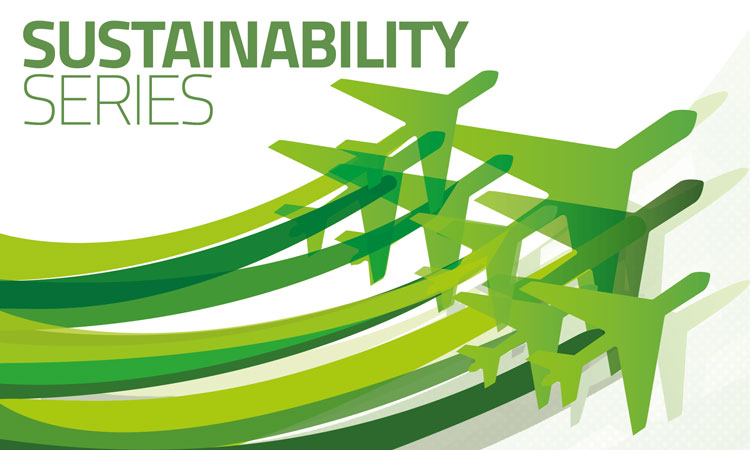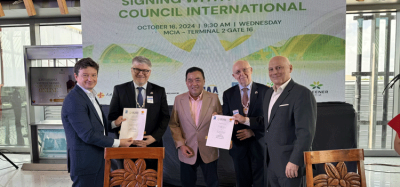Sustainability Series: Gatwick’s 10-year 10-point plan
- Like
- Digg
- Del
- Tumblr
- VKontakte
- Buffer
- Love This
- Odnoklassniki
- Meneame
- Blogger
- Amazon
- Yahoo Mail
- Gmail
- AOL
- Newsvine
- HackerNews
- Evernote
- MySpace
- Mail.ru
- Viadeo
- Line
- Comments
- Yummly
- SMS
- Viber
- Telegram
- Subscribe
- Skype
- Facebook Messenger
- Kakao
- LiveJournal
- Yammer
- Edgar
- Fintel
- Mix
- Instapaper
- Copy Link
Posted: 22 March 2019 | Rachel Thompson | Sustainability Lead | Gatwick Airport | No comments yet
As part of our Sustainability Series we spoke exclusively to London Gatwick to see how they are mitigating their effects on the environment, and what long-term plans they have to keep this impact to a minimum.

Can you give us an overview of the 10-point 10-year plan Gatwick has implemented?
Sustainability has been a key part of Gatwick’s transformation since new ownership in 2010. Our sustainability strategy for 2010-2020 is called ‘Decade of Change’ and is a statement of focus and commitment. It covers ten key topics including carbon, air quality, noise, waste and water, and some important commitments relating to our local communities.
Due to finish next year, are you on track for the sustainable implementation of your decade of change?
Yes, we will achieve most of the programme before 2020 which means we have laid a strong foundation to go further in the next decade and beyond. Importantly, the goals have been robust and we’ve met them even as the number of passengers we serve has grown by 50 per cent.
Water is a good example; our initial goal was to reduce airport water use by 20 per cent. We achieved that by 2015 so we stretched the goal to 25 per cent and now we have achieved that as well. This equates to a 45 per cent improvement in water efficiency over the decade. From fixing and preventing leaks, to water-saving technology in washrooms, catering facilities and car-washing, this kind of water productivity is good for the environment, the local community and our own bottom line.
Waste is an example of our 2020 goals driving business innovation. We achieved our zero-waste to landfill goal mid-decade but 70 per cent recycling/reuse was still a fair way off. That spurred our logistics team to rethink our systems and invest in onsite separation and reuse alongside UK-based recycling. We now process Category 1 waste onsite, and this has lifted our recycling/reuse rate to 64 per cent for 2018. We are also the first airport to be certified by the Carbon Trust as sending zero waste to landfill.
Biodiversity is another important topic and, with the help of our full time ecologist and our ranger, we have met our goal of achieving and retaining a national biodiversity management standard, the Wildlife Trusts’ Biodiversity Benchmark. It’s noteworthy that of the 13 UK organisations certified to this standard, three are in the transport sector: Gatwick, Heathrow and the HS1 Channel Tunnel Rail Line.
How have you achieved the 10 per cent reduction in annual carbon emissions from fuel and energy?
Over the decade, the annual reductions have averaged 5 per cent; the 10 per cent reduction was in 2017. A number of initiatives across the airport have contributed with the most important being the purchase of 100 per cent renewable electricity, as this contributes directly to the decarbonisation of the UK electricity grid. Energy and fuel efficiency projects have also played an important part including boiler upgrades and retirement of old vehicles.
These initiatives, together with Gold Standard carbon offsets, enabled Gatwick to be the first London airport to achieve Airport Carbon Accreditation at ‘neutral’ level.
How long until we see new fuel technology that captures and recycles carbon – recently seen on the Virgin Atlantic plane from Orlando – in most planes arriving at Gatwick?
Low carbon fuels are an essential part of the sustainable growth roadmap for UK aviation and a great example of how our industry is working together to address climate change.
There’s a huge opportunity for the UK to become world leader in sustainable aviation fuels and clean growth. Gatwick is a partner in this effort, through Sustainable Aviation and through the F4C Fuels for Flight and Freight programme created by the Department for Transport.
With the right policy settings and public-private investment frameworks, these fuels could be produced at scale within the UK and come into regular use at Gatwick and other UK airports within five years. That’s ambitious but it can be done if the will is there.
What is included in your air quality plan?
Our Air Quality Action Plan focuses on delivering our goal of improving air quality impacts using new technology, processes and systems.
This includes maintaining airport monitoring systems and updating the airport air quality model on a regular basis, providing financial support to our local authorities for monitoring near the airport, and data-sharing and collaborative initiatives with our local authorities.
It also includes airport initiatives to reduce airfield emissions, such as provision of Fixed Electrical Ground Power, and facilitating uptake of electric-powered airfield ground services equipment.
Presently FEGP is fitted on over 90 per cent of our stands with 99 per cent availability in core operating hours. Around 40 per cent of the airfield ground services equipment (GSE) is already electric powered. We have dedicated bays for charging Electric Baggage Tugs (EBTs), with around 190 charge points. For larger GSE, we have 25 head of stand charging points and we are consulting ground handlers on their equipment plans in order to map out the forward plan for the next five years.
How do you plan on reducing your energy consumption by 20 per cent, as part of your energy action plan?
Our current goals are a 20 per cent reduction by 2020 in airport electricity and gas use, and an energy efficiency metric of four kWh per passenger which would be a 50 per cent improvement compared to 2010. It will be very difficult to reach a 20 per cent absolute reduction but we are on track with the efficiency metric.
We take an integrated approach to energy efficiency, asset performance and resilience, and cost management. This includes defining energy and cost performance targets for capital and asset replacement projects, such as large scale lighting projects, boiler and heating network replacement. It’s also about the careful management of utilities contracts and suppliers.
This approach delivers multiple benefits including energy efficiency. Looking ahead, electricity use in particular is likely to increase due to the e-mobility revolution. So we will maintain the focus on energy productivity – doing more with each unit of energy, while looking to expand use of cost-effective clean energy.
Do you think that we will see more airports following Gatwick’s example in the future?
We are keen to be a business that helps to drive change in this area and to learn from others. I think we provide a good case study on operational efficiency and smart use of space as drivers for sustainability performance. We have some great discussions with airports around the world about this as many airports look to make better use of existing assets. We also try to promote collective action with other sectors, for example the RE100 coalition which we joined in 2016. This is a global corporate leadership programme that aims to accelerate moves to a low carbon economy by encouraging the use of renewable electricity. We were the first airport in the world to join the coalition and it is encouraging to see that other airports have signed up since.
Biography
Rachel leads Gatwick’s Decade of Change sustainability strategy and reporting. She also coordinates Gatwick’s action plans on carbon and air quality. Prior to joining Gatwick in 2015, Rachel held several sustainability consulting roles focused in retail, real estate, technology and transport sectors. Rachel began her career in Australia’s Department of Foreign Affairs and Trade, specialising in international trade negotiations.


















